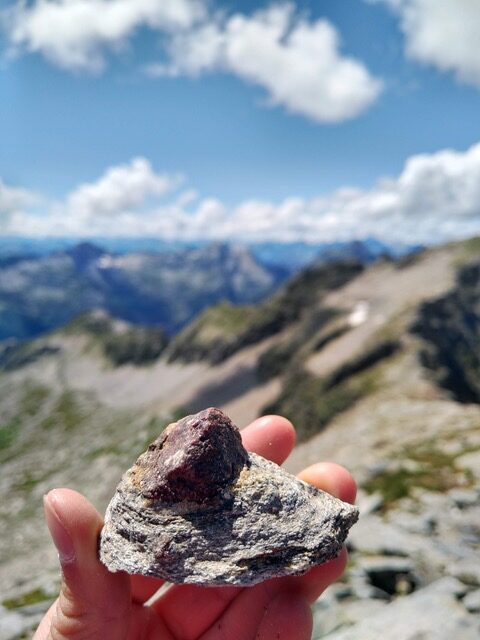Cette publication est également disponible en :
![]() Français
Français

Thesis defended by Alessia Tagliaferri, December 6th, 2023 – Institute of Earth Sciences (ISTE).
The Lepontine area constitutes the core of the Central European Alps. It has a dome structure and it is internally formed by rock units which register pressure and temperature conditions typical of collisional orogens. The temperatures recorded by minerals are high (around 600-650 °C) and the origin of the heat that affected the Lepontine units is still unclear.
In this thesis we implemented multiple branches of geology to study the contribution of different sources of heat to the overall heat budget of the Lepontine dome. Our study revealed the age of the Alpine events which juxtaposed the Lepontine units, their provenance and their evolution.
We simulated the piling up of rock units with numerical models. These models show that heat was mainly transported by the movement of rocks and conduction acted simultaneously.
In the field, we performed extensive geological mapping to define lithologies and structures of rocks. Fieldwork permitted us to discover new rock units and better characterize the transition between the large-scale units constituting the Lepontine dome. From 13 samples, we extracted 1158 zircon crystals that we analyzed and dated using U-Pb technique. We propose a geodynamic scenario involving a major Alpine large-scale unit which moved over a shear zone during rocks exhumation. The emplacement of this unit generated the main heating event at 31-33 Ma, which is widespread and resulted in peak temperature conditions. Locally in the south we document magmatic/fluid injections at 22-24 Ma, that sourced from still-hot regions in the roots of the orogen.
The thermal evolution after the main heating event was regionally complex and spatially heterogeneous. We studied the cooling history at conditions close to the peak (around 31 Ma) in 6 samples. The rocks cooled very fast (above 100 °C/Myr) within the main shear zone and cooled slowly (2 °C/Myr) in the core of the Lepontine dome. The high cooling rates within the shear zone are indicative of a short-term heat production during peak, which we associate with heat produced due to friction during the emplacement of the main Alpine unit.In conclusion, the movement of the major large-scale unit caused heat transported with it and local heat production due to friction at its base, which contributed to the Lepontine heat budget together with conduction.


